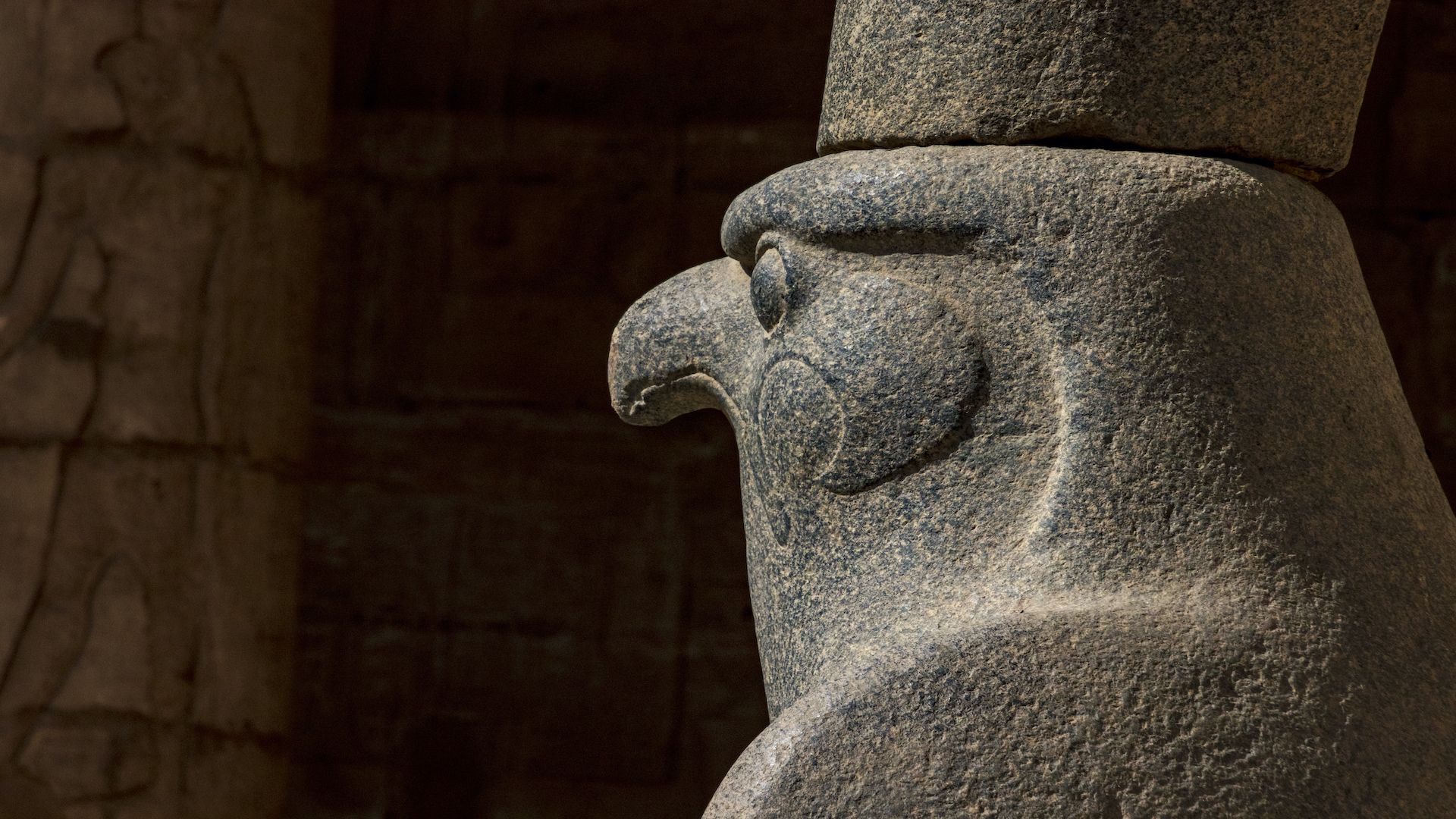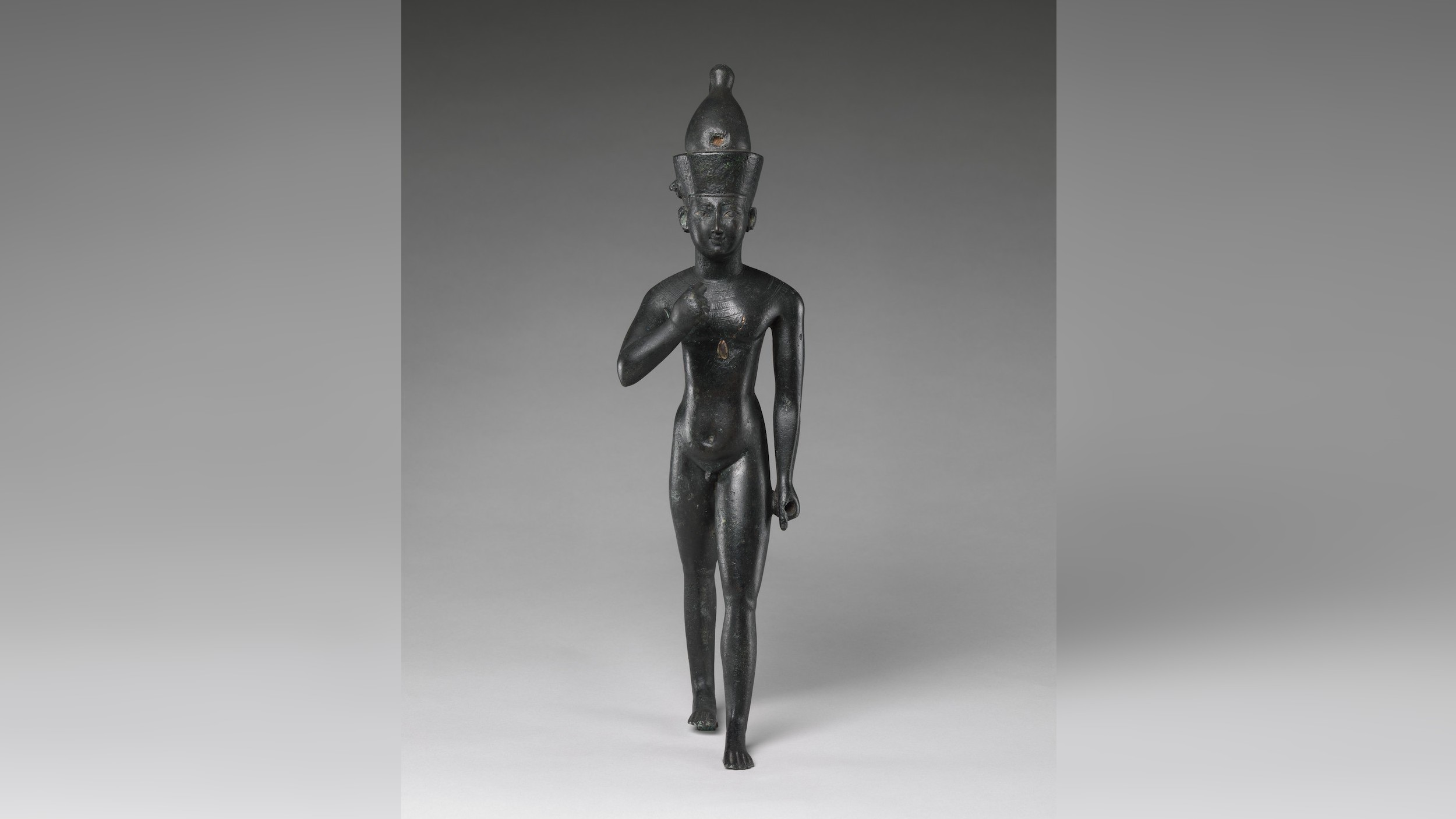Falcon shrine with cryptic message unearthed in Egypt baffles archaeologists
An ancient falcon shine in Berenike, an old port city in Egypt, has flummoxed archaeologists who aren't sure what to make of its headless falcons, unknown gods and cryptic message that reads, "It is improper to boil a head in here."

Archaeologists in Egypt have discovered a 1,700-year-old "falcon shrine," complete with the remains of 15 headless falcons on a pedestal, as well as a stone monument depicting two unknown gods.
The shrine and monument — which were found in Berenike, an ancient Egyptian port on the Red Sea — were described in a paper that was published in the October issue of the American Journal of Archaeology. An iron harpoon that is about 13 inches (34 centimeters) long was found near the pedestal, researchers wrote in the study.
"The decapitation of the falcons seems to be a local gesture of completing a live offering to the god of the shrine," David Frankfurter, a professor of religion at Boston University who was not involved in the excavation, told Live Science in an email. "Votive sacrifice of a live animal usually involves some kind of killing or blood-asperging to show the commitment of the devotee."
In another room of the shrine, archaeologists found a stela, or pillar, with a Greek inscription that translates to "It is improper to boil a head in here." It remains a mystery why the falcons were decapitated, why a stela was placed in a room prohibiting the boiling of heads and why a harpoon was placed near the falcons.
Related: 3,300-year-old pink granite sarcophagus of Egyptian 'pyramid keeper' found at Saqqara
The stela depicts three deities: Harpokrates [also spelled Harpocrates] of Koptos, who is a "child god," and two enigmatic deities whose names are not clear. One has a "falcon head," and the other is a goddess who wears a crown made of "cow horns and a solar disk," the team wrote, noting that the god with the falcon head seems to be the most prominent of the three deities displayed.
One possible explanation is that the 15 headless falcons were offerings made to the deities, particularly the god with the falcon head. The harpoon also may have been an offering, the researchers proposed.
Sign up for the Live Science daily newsletter now
Get the world’s most fascinating discoveries delivered straight to your inbox.
"We hypothesize that the sacrificial animals were boiled before being presented to the god, perhaps to facilitate plucking their feathers, and that their heads were removed, according to the prescription on the stele," the team wrote in their paper.
The shrine also contained the remains of fish, mammals and bird eggshells. Some of these may have been offerings as well, and feasting may have happened at the shrine, the team noted.
At the time the shrine was in use, around the fourth century A.D., the Roman Empire controlled Egypt but their control was waning.
At Berenike, the team found inscriptions written by Blemmyan kings. The Blemmyes were semi-nomadic people who lived largely in what is now Sudan and parts of southern Egypt. The finds at Berenike suggest the Blemmyes lived at Berenike between the fourth and sixth centuries A.D., until they abandoned the site.
Religious implications
The shrine shows that old religious practices persisted even after Christianity arose, Frankfurter told Live Science. At the time the shrine was in use, Christianity was the official religion of the Roman Empire.
"The Berenike falcon shrine, evidently still functioning as a ritual center in the late fourth century or later, shows once again that traditional Egyptian religion did not vanish with the rise of Christianity but persisted and changed in many parts of Egypt through the efforts of local communities," Frankfurter said

To have finds like these unearthed intact is rare, Salima Ikram, an Egyptology professor at The American University in Cairo, told Live Science in an email. "What an amazing stroke of luck to find such in situ deposits!" Ikram said. "The distribution of falcons in the chamber is extraordinary, and the other objects, especially the stela, are wonderful."
The decapitated falcons and prohibition against boiling heads raise a number of questions about cult, ritual and various belief systems that melded at Berenike, Ikram added.
"This find is a small but crucial part in deciphering the complex religious beliefs and rituals that flourished at this port city," Ikram said.

Owen Jarus is a regular contributor to Live Science who writes about archaeology and humans' past. He has also written for The Independent (UK), The Canadian Press (CP) and The Associated Press (AP), among others. Owen has a bachelor of arts degree from the University of Toronto and a journalism degree from Ryerson University.










